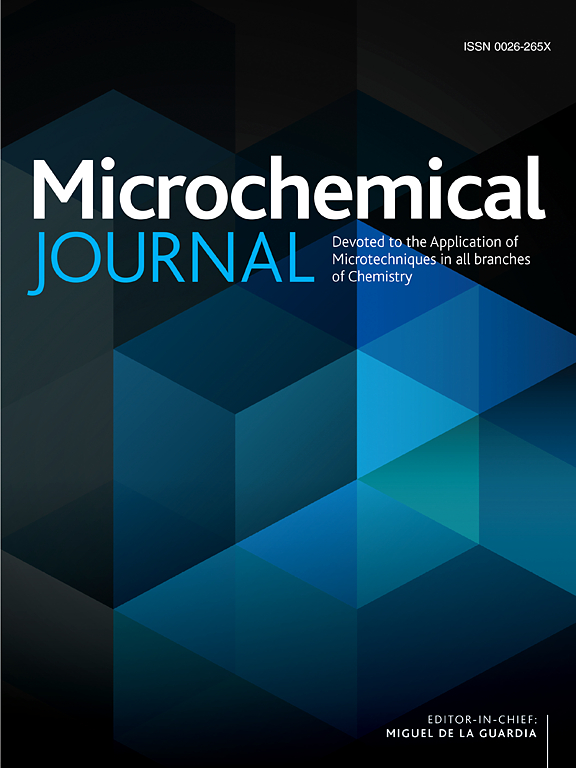ZnCo(OH)F-derived ZnCo2O4/MWCNTs composite for sensitive detection of 4-nitrophenol
IF 4.9
2区 化学
Q1 CHEMISTRY, ANALYTICAL
引用次数: 0
Abstract
4-Nitrophenol (4-NP), a hazardous chemical compound, presents significant risks to ecological balance, public well-being, and the integrity of the food supply chain. Consequently, the development of detection techniques characterized by both efficiency and precision is of utmost importance. In the present work, ZnCo(OH)F/multi-walled carbon nanotubes (MWCNTs) composite was synthesized through a hydrothermal approach, followed by a high-temperature annealing process to transform them into ZnCo2O4/MWCNTs tailored for electrochemical sensing of 4-NP. The integration of MWCNTs during the fabrication process induced a pronounced synergistic interaction between ZnCo2O4 and MWCNTs, leading to a substantial enhancement in the electrochemical performance of the composite. The ZnCo2O4/MWCNTs-based sensors exhibit notable benefits, including an expanded electrochemically active surface area, superior electrical conductivity, and exceptional selectivity. Under optimized experimental parameters (S/N = 3), the sensor exhibited a broad linear detection range (0.5–600 μM), coupled with a lower limit of detection of 0.026 μM. When used on real samples, the sensor showed recovery rates of 98.79 %–100.47 %, indicating its feasibility for practical use in environmental monitoring and food safety evaluation.

ZnCo(OH) f衍生ZnCo2O4/MWCNTs复合材料对4-硝基苯酚的灵敏检测
4-硝基酚(4-NP)是一种有害化合物,对生态平衡、公众福祉和食品供应链的完整性构成重大风险。因此,发展既高效又精确的检测技术是至关重要的。本文通过水热法制备了ZnCo(OH)F/多壁碳纳米管(MWCNTs)复合材料,并通过高温退火工艺将其转化为适合4-NP电化学传感的ZnCo2O4/MWCNTs。在制备过程中,MWCNTs的整合诱导了ZnCo2O4和MWCNTs之间明显的协同相互作用,导致复合材料的电化学性能大幅提高。基于ZnCo2O4/ mwcnts的传感器具有显著的优势,包括扩大的电化学活性表面积,优越的导电性和卓越的选择性。在优化的实验参数(S/N = 3)下,该传感器具有较宽的线性检测范围(0.5 ~ 600 μM),检测下限为0.026 μM。该传感器在实际样品上的回收率为98.79% ~ 100.47%,可用于环境监测和食品安全评价。
本文章由计算机程序翻译,如有差异,请以英文原文为准。
求助全文
约1分钟内获得全文
求助全文
来源期刊

Microchemical Journal
化学-分析化学
CiteScore
8.70
自引率
8.30%
发文量
1131
审稿时长
1.9 months
期刊介绍:
The Microchemical Journal is a peer reviewed journal devoted to all aspects and phases of analytical chemistry and chemical analysis. The Microchemical Journal publishes articles which are at the forefront of modern analytical chemistry and cover innovations in the techniques to the finest possible limits. This includes fundamental aspects, instrumentation, new developments, innovative and novel methods and applications including environmental and clinical field.
Traditional classical analytical methods such as spectrophotometry and titrimetry as well as established instrumentation methods such as flame and graphite furnace atomic absorption spectrometry, gas chromatography, and modified glassy or carbon electrode electrochemical methods will be considered, provided they show significant improvements and novelty compared to the established methods.
 求助内容:
求助内容: 应助结果提醒方式:
应助结果提醒方式:


